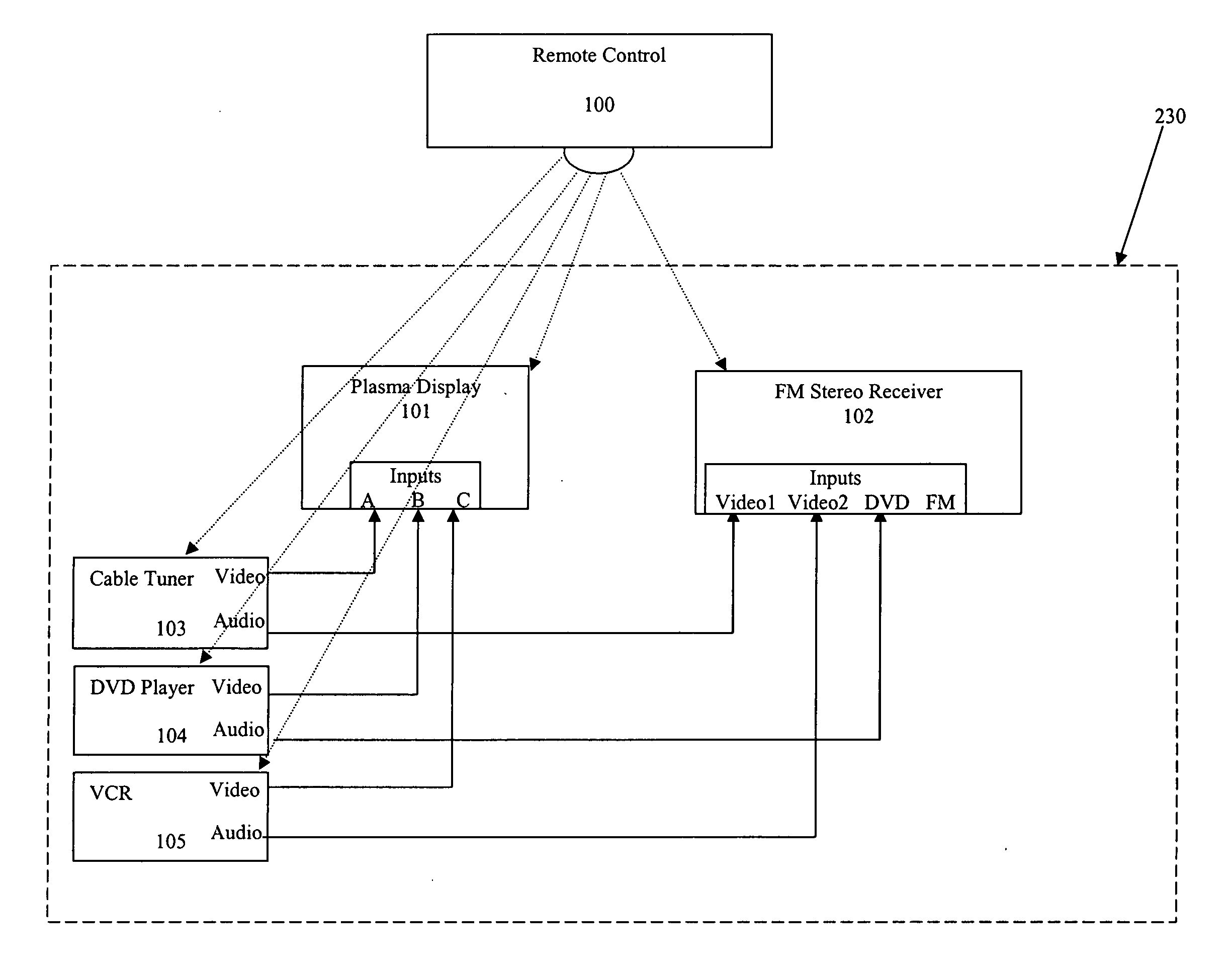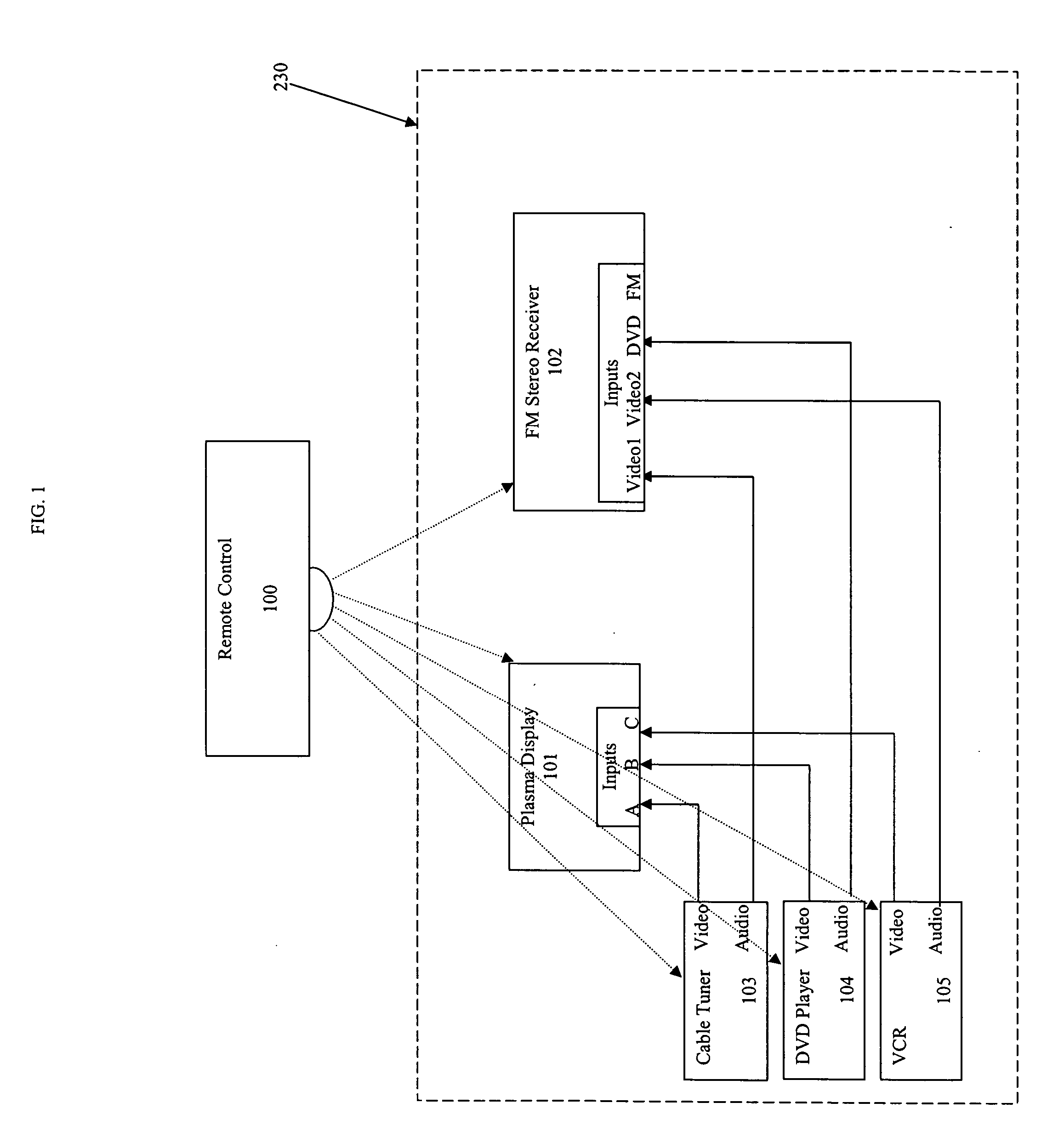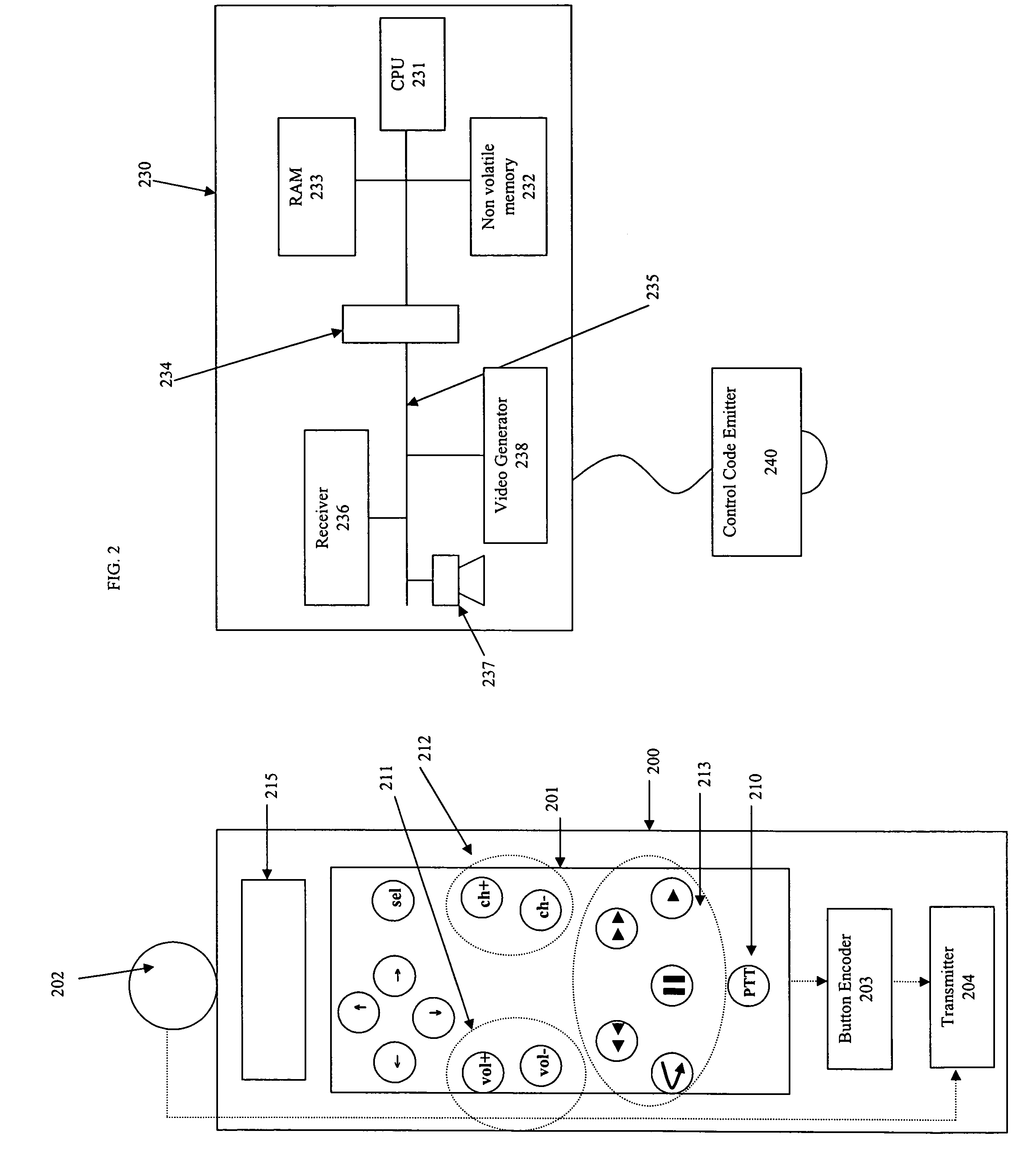Activity-based control of a set of electronic devices
a technology of electronic devices and activities, applied in the field of electronic home theater remote controls, can solve the problems of frustrating the user's ability to easily control them, the introduction of universal remotes has not solved the problem, and the home theater system has grown increasingly complex, etc., and achieves the effects of convenient use, convenient operation, and convenient operation
- Summary
- Abstract
- Description
- Claims
- Application Information
AI Technical Summary
Benefits of technology
Problems solved by technology
Method used
Image
Examples
first embodiment
[0047] Referring now to FIG. 4A, an illustrative operation of a main control algorithm for the invention is described. In this embodiment, it is assumed that the system can track the state of each device to be controlled. As noted above, this algorithm may be implemented in software (e.g., as executable code derived from a set of program instructions) executable in a given processor.
[0048] Lines 401-436 run as an endless loop processing user commands that are sent from handheld 200. Thus, the algorithm may be considered a state machine having a number of control states, as are now described in more detail.
[0049] Lines 402-403 convert a spoken station name to the equivalent channel number, e.g., by looking up the station name in a Stations table 500, an example of which is provided in FIG. 5. Thus, a user may give a spoken command such as “CNN Headline News” without having to know the channel number. A by-product of this functionality is that the remote need not include numeric cont...
PUM
 Login to View More
Login to View More Abstract
Description
Claims
Application Information
 Login to View More
Login to View More - R&D
- Intellectual Property
- Life Sciences
- Materials
- Tech Scout
- Unparalleled Data Quality
- Higher Quality Content
- 60% Fewer Hallucinations
Browse by: Latest US Patents, China's latest patents, Technical Efficacy Thesaurus, Application Domain, Technology Topic, Popular Technical Reports.
© 2025 PatSnap. All rights reserved.Legal|Privacy policy|Modern Slavery Act Transparency Statement|Sitemap|About US| Contact US: help@patsnap.com



